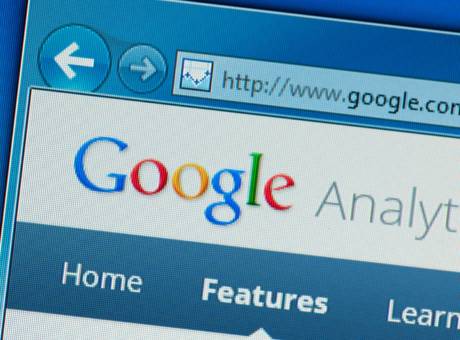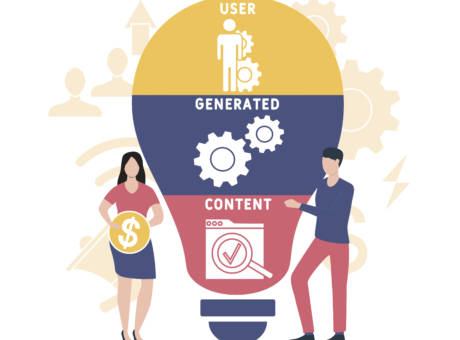
Traditional media monitoring – press, radio, television
In the pre-Internet era and shortly after its beginning, academic courses on electronic media focused on linear broadcast by radio and television stations to passive recipients of content – viewers or listeners. In recent decades, there has been a significant change in this area – in the digital age, the information and entertainment media market is increasingly being taken over by simultaneously broadcast content streams, launched and sent at the user’s request, and the development of social media blurring the so far clear distinction between content producers and their recipients (this change was once announced by YouTube’s slogan: Broadcast Yourself).
TRADITIONAL OR NEW MEDIA?
Currently, also media monitoring specialists most often focus on social networking sites, artificial intelligence and generally everything that functions in cyberspace. Collecting press clippings or even analysing traditional electronic media (radio and television) seems archaic, and these sources could belong to prehistory. Is it really so? What are the benefits of traditional media monitoring?
One of the goals of media monitoring is to assess the response to a message broadcast by a particular channel. Effective monitoring also enables you to react to crisis situations and prevent their occurrence in the future, facilitates media campaign planning, generates knowledge about the competition and allows you to discover which factors have the greatest impact on the brand. The following paragraphs will help you understand the importance of the marginalised monitoring of traditional media.
HOW DID IT BEGIN?
In the second half of the 20th century, television appeared in almost every Western home and changed our way of looking at the world: obtaining information, education, and spending free time. It has become an easy way to deliver rich, multi-channel content to almost every household. It must be admitted, however, that both the press and radio and television are platforms with limited interaction. The participation of listeners or viewers in the shows is limited to calls to the studio received during them. By contrast, social media are interactive, personalised and user-controlled. However, the time during which information in social media affects the recipients is relatively short (it may be several hours in the case of microblogs), and its reach is shallow – more conducive to only signalling the existence of the brand, related events or engaging in discussions about it. The dynamic nature of new media manifests itself not only in immediate changes in the published content (which can be updated on a regular basis) but also in the functioning of the websites themselves, the mechanisms of which are constantly improved. These frequent changes and the ease of introducing them often have a negative impact on the perception of the credibility of information appearing in the Internet space.
At the same time, traditional media (television, radio and press) are perceived by recipients as trustworthy. It is thanks to the static nature of the message, which can be archived and stored unchanged on mass media: magnetic discs, optical discs, in the case of radio and television publications; or collected and catalogued, i.e. described in resources in the case of magazines or more broadly – in print media.
THE REACH OF TRADITIONAL MEDIA
According to the Nielsen research concerning Q4 2018, despite the downward trend, still more than 70% of Americans watch television. However, the amount of TV time varies with age: in the group of 18-34-year-olds the average time spent in front of the TV was almost two hours a day, but the screen time among younger viewers (adolescents 12-17 years old) fell to less than an hour a day. For comparison: viewers in the 35–49 age group spent on average over three and a half hours in front of the TV.
The report of the National Broadcasting Council from the end of 2015 on media use in Poland indicates that 80% of the population declare they watch television every day, but only 44% of Poles declare that they listen to the radio equally often. Almost half of Poles declare reading the printed press at least once a week, while in the second half of the year 35% do not read the press at all, and 15% – less than once a week.
The cited data shows that traditional media are still important and for many people the main source of information, and thus – an important channel of reaching the audience, both for brand owners and opinion-makers or political message makers.
ADVERTISING IN TRADITIONAL MEDIA
The scope of the impact of traditional media and the importance of information disseminated by them are illustrated by the prices of advertising time. It is worth mentioning a few important details here:
- In its price list, TVP has a price breakdown by commercial duration: from 5 seconds to a minute. Since the last format is chosen very rarely, let’s look at how much you have to pay for broadcasting a 5-second commercial on TVP Polonia before the rerun of the “Klan” episode around 5 is – PLN 53. This is a very low minimum commercial broadcast price. At the other extreme, there is a block preceding the broadcast of the Euro 2020 qualifying match – Poland-Austria: the price for a 45-second commercial is appalling (or as the Anglo-Saxons say: staggering) PLN 285,000. The highest price on standard days may be paid for commercials aired after the main issue of TVP1’s “Wiadomości”: on 2 September 2019, it was PLN 22,495 for 10 seconds and PLN 61,350 for 45 seconds.
- In the commercial television segment, it is worth rejecting the first association (probably TVN) and looking at Polsat: the lowest commercial price is PLN 900. This applies to the block broadcast in the hardly watched time (3 am) during the rerun of the second season of the series “Chirurdzy”. The highest prices are achieved by blocks issued between the end of the main issue of “Wydarzenia” news bulletin and the evening weather forecast: PLN 90,900 and PLN 92,000, respectively.
- Much lower prices apply to the radio segment. The flagship station of Polish Radio, Radio Three, has the lowest ad price at night (00.00-5.59): for 25-30-second commercials, you should pay PLN 500, regardless of the day of the week. A certain variability applies to the block from 6.00 to 6.59: on Mondays and Tuesdays, it costs PLN 3,400; from Wednesday to Friday the cost is PLN 4,300; and at weekends – again only PLN 500. The highest prices apply to the blocks from 7.00 to 8.59. They are: from PLN 8,300 to PLN 9,600 on Mondays and Tuesdays; from PLN 10,200 to PLN 12,100 from Wednesday to Friday, respectively; with some variability in weekend prices: PLN 4,800 on Saturday and PLN 3,600 on Sunday. This trend also shows when the radio is consumed: the morning hours on weekdays predominate, as the sound of music and favourite programmes usually accompany listeners in preparation for leaving home and going to work.
The prices of press advertisements place the scope of their influence between television and the radio. We will have a brief insight into them on the example of the Rzeczpospolita daily. The amount you need to pay depends on the ad’s location and size. The price is the highest for the so-called “junior page” – the third page: it is PLN 190,400. The adverts placed in thematic sections, e.g. “My money”, are the least costly – their price is PLN 1,200-1,900 (the third page in the section and other editorial pages).
Referring to the trends indicated earlier, it is worth noting that modern monitoring does not focus on one type of media, e.g. social media or the Internet. Rather, it is important to consolidate the various sources and evaluate the relationships that arise within them in order to facilitate effective brand management. Only after obtaining such broad feedback, we will be able to look at the overall assessment of our activity in a broader media context.
Sources:
Michael Bland, Alison Theaker, David Wragg, Effective Media Relations: How to Get Results
https://www.marketingcharts.com/featured-105414
https://www.nielsen.com/us/en/insights/report/2019/q3-2018-total-audience-report
https://www.marketingcharts.com/featured-105414
https://brtvp.pl/39801984/cennik
https://www.polsatmedia.pl/Do-pobrania/index.html
http://reklama.polskieradio.pl/_doc/PR3_-_Cennik_od_6_01_2020.pdf
https://gremimedia.pl/pdf/reklama/cennik-reklamy-w-papierze-rzeczpospolita.pdf

REACH CUSTOMERS,
BOOST SALES










 The prices of press advertisements place the scope of their influence between television and the radio. We will have a brief insight into them on the example of the Rzeczpospolita daily. The amount you need to pay depends on the ad’s location and size. The price is the highest for the so-called “junior page” – the third page: it is PLN 190,400. The adverts placed in thematic sections, e.g. “My money”, are the least costly – their price is PLN 1,200-1,900 (the third page in the section and other editorial pages).
The prices of press advertisements place the scope of their influence between television and the radio. We will have a brief insight into them on the example of the Rzeczpospolita daily. The amount you need to pay depends on the ad’s location and size. The price is the highest for the so-called “junior page” – the third page: it is PLN 190,400. The adverts placed in thematic sections, e.g. “My money”, are the least costly – their price is PLN 1,200-1,900 (the third page in the section and other editorial pages).


